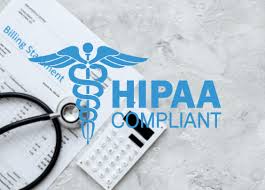In the age of digital innovation, healthcare providers are increasingly turning to secure and efficient communication channels to manage sensitive patient information. One such transformation is occurring in the realm of print and mail services—an area often overlooked but crucial to patient engagement, billing, records delivery, and compliance. As healthcare organizations navigate strict privacy laws and the need for streamlined communication, HIPAA compliant print and mail services and specialized healthcare mailing services have emerged as essential solutions.
The Need for Secure Communication in Healthcare
The Health Insurance Portability and Accountability Act (HIPAA) was enacted to protect the confidentiality, integrity, and availability of protected health information (PHI). While much attention is given to digital security, printed communications and mailed documents also carry a significant amount of PHI. From patient billing statements to appointment reminders and test results, these physical documents must adhere to the same stringent standards as digital communications.
This is where HIPAA compliant print and mail services become crucial. By leveraging vendors that specialize in secure mailing, healthcare providers can ensure sensitive information is handled, processed, and delivered in full compliance with regulatory standards.
What Makes a Print and Mail Service HIPAA Compliant?
A HIPAA compliant print and mail service goes beyond basic printing and mailing capabilities. It requires strict adherence to data privacy regulations and the implementation of robust safeguards to protect patient information throughout the printing and mailing process.
Here are some of the key requirements:
- Secure Data Handling: Data must be encrypted both in transit and at rest. Access to PHI should be limited to authorized personnel only.
- Audit Trails: Complete audit logs should be maintained to track who accessed and handled the information.
- Business Associate Agreements (BAAs): The vendor must sign a BAA acknowledging their role in handling PHI and committing to HIPAA compliance.
- Physical Security: Print and mail facilities should have strong physical security measures in place, such as surveillance, restricted access, and secure document disposal practices.
- Process Integrity: The service must include quality checks, verification procedures, and redundancy protocols to ensure data accuracy and prevent breaches.
Challenges with Traditional In-House Mailing
Many healthcare providers still rely on in-house mailing processes. While this may seem manageable, it comes with hidden risks and operational burdens.
- Risk of Data Breaches: Internal staff may not be trained in HIPAA regulations, leading to unintentional disclosures.
- Resource Intensive: Managing equipment, paper, ink, and postage takes time and money away from core healthcare functions.
- Lack of Scalability: As patient numbers grow, manual processes quickly become unmanageable and error-prone.
- Inconsistent Compliance: Without dedicated compliance protocols, even small errors can result in major HIPAA violations and fines.
The Benefits of HIPAA Compliant Print and Mail Outsourcing
Outsourcing your printing and mailing needs to a trusted provider offers numerous benefits beyond compliance.
1. Efficiency and Accuracy
Automation eliminates manual entry errors, reduces duplicate mailings, and ensures all documents are printed with the correct patient information. Advanced software also enables conditional logic for printing, so only the necessary pages are mailed, saving on costs.
2. Cost Savings
Partnering with a vendor specializing in HIPAA compliant print and mail reduces the need for in-house equipment, personnel, and training. These cost savings can then be redirected toward improving patient care or upgrading digital systems.
3. Improved Patient Communication
Timely, accurate, and personalized communication builds trust with patients. From test results and prescription updates to billing and appointment reminders, outsourcing ensures these critical messages are delivered without delay.
4. Compliance Confidence
Choosing a certified HIPAA-compliant partner gives healthcare organizations peace of mind, knowing their patient data is being handled properly. This reduces the risk of audits, fines, or reputation damage due to non-compliance.
Use Cases for Healthcare Mailing Services
The versatility of healthcare mailing services makes them suitable for a wide variety of applications across the medical field:
- Patient Billing Statements: Automatically generated, printed, and mailed based on billing software triggers.
- Test Results and Reports: Securely delivered to patients who prefer physical documentation or do not have digital access.
- Appointment Reminders: Personalized mailers that help reduce no-show rates and improve patient adherence.
- Regulatory Notices and Legal Disclosures: Properly formatted and tracked to ensure compliance with federal and state regulations.
- Marketing and Wellness Campaigns: Segmented mailing lists based on patient demographics to promote screenings, flu shots, or new services.
When choosing a vendor, look for services that offer print tracking, delivery confirmation, and seamless integration with electronic health record (EHR) systems.
Why PostGrid Stands Out
Organizations looking for reliable HIPAA compliant communication solutions are increasingly turning to PostGrid. Their HIPAA compliant print and mail service is designed specifically for the healthcare sector, ensuring every touchpoint with patients is secure, professional, and efficient.
Additionally, PostGrid’s healthcare mailing services enable organizations to automate patient outreach while maintaining full control over content, branding, and delivery schedules. With seamless API integrations, real-time tracking, and audit trails, PostGrid empowers healthcare providers to meet compliance standards effortlessly.
Future Trends in Healthcare Mailing
As the healthcare industry continues to digitize, print and mail services are evolving in parallel. Some trends to watch include:
- Increased Use of Hybrid Communication Models: Combining digital and print channels to meet patient preferences and maximize engagement.
- Advanced Personalization: Using data analytics to tailor messages, content, and mailing times to each individual patient.
- Eco-Friendly Printing Practices: Providers are becoming more conscious of their environmental impact, choosing vendors that offer sustainable paper, ink, and delivery options.
- AI-Driven Automation: Machine learning algorithms can optimize mailing schedules, content delivery, and error detection, increasing efficiency and reducing costs.
Final Thoughts
Print and mail services may seem like a legacy component in today’s tech-forward healthcare world, but they remain a critical part of the communication ecosystem. The key to modernizing this function lies in choosing a provider that understands the complex regulations and nuances of patient communication.
With increasing scrutiny over data privacy and the ongoing need to improve patient experience, investing in HIPAA compliant print and mail and tailored healthcare mailing services is no longer optional—it’s a strategic imperative. Solutions like those offered by PostGrid not only safeguard your practice against compliance risks but also help build better, more trustworthy relationships with patients.
By outsourcing to the right partner, healthcare providers can achieve operational excellence, regulatory compliance, and above all, better outcomes for the people who matter most—their patients.



